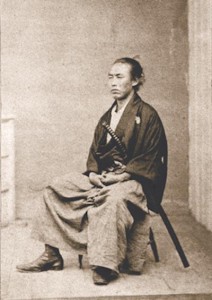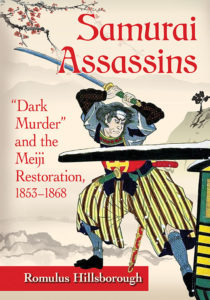

The 150th anniversary of the assassination of Sakamoto Ryōma is being widely observed this month. On Keiō 3/11/22 (1867), seven days after Ryōma’s assassination, officials of his native Tosa Han issued a formal indictment to the Bakufu accusing the Shingsengumi of the crime. “Four days later,” I wrote in Samurai Assassins, “the Bakufu questioned [Shinsengumi Commander] Kondō Isami. But it was a mere formality. Earlier in the year all Shinsengumi men had been given hatamoto status [hatamoto being vassals of the shōgun], and its commander had direct access to the shōgun. When Kondō testified that the Shinsengumi had nothing to do with the assassinations [including that of Ryōma’s cohort Nakaoka Shintarō], the matter was settled as far as the Bakufu was concerned.” And, in fact, the Shinsengumi had nothing to do with the incident.

